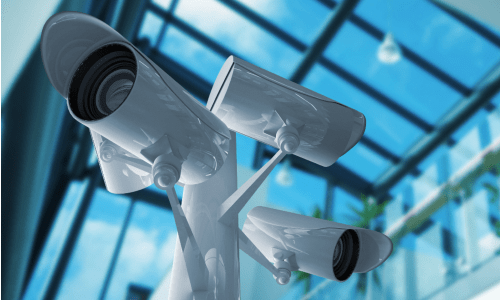9.30.21 -SSI –Scott Wierstra

One way today’s smart cameras enhance security is by removing complexity. They can do this by eliminating manual processes and so much more.
Enterprises want solutions that protect employees and customers while also safeguarding assets from theft and damage. Advances in physical protection technologies empower you to provide not just these capabilities, but so much more.
The new features and opportunities start, as so many things do these days, in the Cloud. That’s not to say the Cloud itself is the key: it’s a means to an end — a tool.
Results are key, though. The effects of moving to Cloud-based video technologies from traditional on-premises systems are varied and meaningful. A combination of factors — smart cameras with capabilities like analytics and Cloud — add up to multiple benefits, including novel returns on investment and business opportunities. Combined, they create smart spaces and safe environments, resulting in better experiences for everyone, customers and employees alike.
Cutting complexity
One way today’s smart cameras enhance security is by removing complexity. They can do this by eliminating manual processes which can be error-prone, time-consuming, or costly, and sometimes even all three.
These IP-based cameras use built-in analytics and machine learning to power motion search and motion recap capabilities, making it much easier to find the footage your customers need. Instead of manually wading through footage, smart cameras’ software gives more rapid access to the incidents of interest.
Noosa Yoghurt, for example, no longer watches hours of footage to find product loss. Instead, the IT team chooses the relevant portion of the camera view to investigate and quickly finds the footage they need.
Because smart cameras like those deployed by Noosa Yoghurt use standards-based software, footage does not need reformatting if an enterprise needs to share it with law enforcement or other external organizations. Instead of waiting days or weeks for footage to be reformatted in order to submit it for an insurance claim or complaint, your customers can share the footage almost immediately.
That was the case at U.K.-based Crediton Dairy. After replacing its legacy network video recorder system with wireless smart camera technology, it rapidly recouped insurance proceeds after quickly proving a delivery truck was responsible for property damage, according to Benjamin Evans, IT Manager.
Simplifying management
Cloud-based smart cameras can further enhance simplicity and security by including automated firmware updates and patches. Teams also can use a dashboard to see whether cameras are offline or inoperable without having to physically check the cameras.
Built-in video encryption at rest and in transport also amplifies security. Some smart cameras allow enterprises and partners to easily define who can see various cameras, view historical footage, and export video for further layers of security and integrity.
Breaking tradition
These are not the only reasons enterprises are embracing Cloud-based video systems. The additional benefits smart cameras provide are expanding the value of this technology and the role it plays within organizations.
As businesses adopt hybrid workspaces and develop return-to-office policies, many see a larger role for smart cameras equipped with analytics. They are being used to monitor occupancy rates in conference rooms and buildings, for example.
Some enterprises, like Crediton Dairy, use smart cameras to ensure areas receive regular cleanings and manage the use of safety gear. As part of its approach to creating and maintaining a safe environment, Crediton Dairy’s security system monitors employees’ wearing of personal protective equipment.
Hearing things
In addition to providing increased visibility, smart cameras also may learn the sounds of emergency vehicles’ sirens and alarms. If people must evacuate, the cameras will help ensure an accurate headcount during the exodus.
On the planning and operational front, smart cameras’ analytics can monitor traffic to see whether today’s workforce requires fewer parking spaces. Data from sensors informs about processes and procedures, so enterprises can act with agility and flexibility.
Building blocks
Smart cameras are full of capabilities right out of the box. Add a vibrant ecosystem of partners with a menu of easy-to-use APIs that connect to a programmable, Cloud-based network architecture and integrate with numerous applications, and the opportunities are immeasurable.
Enterprises are starting to expect more from their security cameras than grainy video that requires hours of manual labor if an incident occurs. With Cloud-based smart cameras, you create an intelligent, safer space for your customers’ people, places, and things.
Scott Wierstra is Senior Manager of IoT Product Management at Cisco Meraki.
